Stop Building Silos, Start Building Systems
Explains how fragmented automation and tool silos harm software delivery, and advocates for unified engineering systems and platform engineering to …
Applying practical, experience-based problem-solving in complex environments.


Pragmatic Thinking is the application of practical, experience-based problem-solving in complex environments, enabling teams to navigate challenges effectively. This approach prioritises actionable insights over theoretical constructs, fostering a mindset that values real-world applicability. By focusing on what works in practice, teams can adapt their strategies to deliver value predictably and sustainably.
This concept is crucial in environments characterised by uncertainty and rapid change, as it encourages a culture of experimentation and learning. Teams employing Pragmatic Thinking are better equipped to identify and implement solutions that resonate with their specific context, rather than relying solely on prescribed methodologies. This adaptability not only enhances responsiveness to customer needs but also promotes resilience in the face of evolving market dynamics.
Pragmatic Thinking supports long-term systemic improvements by embedding a continuous learning ethos within the organisation. It empowers teams to reflect on their experiences, iterate on their processes, and refine their approaches, ultimately leading to enhanced performance and value delivery. By integrating this mindset into daily practices, organisations can cultivate a robust framework for sustained innovation and effective problem-solving, ensuring they remain competitive and relevant in their respective fields.
Explains how fragmented automation and tool silos harm software delivery, and advocates for unified engineering systems and platform engineering to …
Tracking estimation accuracy in software delivery leads to mistrust, fear, and distorted behaviours. Focus on customer value, flow, and outcomes, not …
Scrum teams must deliver working software to real users every Sprint; true progress is measured by delivery to production, not just by completing …
Excessive handoffs in software development create delays, reduce quality, and harm team morale. Learn how eliminating handoffs boosts agility, flow, …
Most agile transformations fail by neglecting agency, empowering people and systems to adapt, making true agility possible through autonomy, evidence, …
Using data, metrics, and feedback to drive continuous improvement in teams and processes.
Explains how audience-based deployment and testing in production enable faster feedback, safer rollouts, and higher software quality by targeting real …
Explores why traditional Dev-Test-Staging-Production pipelines fall short and highlights audience-based deployment for safer, faster feedback in real …
Worried about cloud migration chaos? Discover why a hybrid approach beats “lift and shift” and how to align teams for a seamless, risk-free …
Explores how lacking developer control over production, telemetry, and deployments undermines DevOps, leading to fragile automation and failed …
Continuous Improvement is the ongoing practice of relentless reflection and adaptation, driven by empirical evidence, aimed at consistently enhancing …
Explains how immersive learning combines Agile and Scrum theory with hands-on practice, real-world scenarios, and expert guidance to boost skills, …
Explores Agile as a disciplined system of delivery, emphasizing engineering excellence, CI/CD, observability, and system design over mindset or …
NKD Agility helped SLB unify 800+ engineering teams by consolidating DevOps systems, standardizing processes, and improving visibility, collaboration, …
Defines the Definition of Done in Scrum as a clear, shared standard for quality, ensuring increments are releasable, transparent, and continuously …
Explains how the Definition of Done evolves in Scrum, aligning team practices with organisational standards to ensure consistent quality, compliance, …
Continuous delivery is achievable for any software, regardless of complexity. Success depends on investment in automation, quality, and process …
Discover why “done” means live in production, not just code complete. Learn to deliver real value, close feedback loops, and drive outcomes that …
Argues that the Scrum Master role requires proven mastery and real-world experience, not entry-level skills or certifications, and should be earned …
Explains how Scrum teams can strategically allow unfinished work to flow across Sprint boundaries, enhancing throughput, responsiveness, and …
AI exposes that coding was never the main bottleneck in software delivery; real constraints are in system flow, team practices, and organisational …
Still deploying manually? Discover why automation isn’t optional, protect your business, avoid disaster, and deliver value with modern engineering …
Explains why dependencies are a sign of poor system design and outlines steps to eliminate them by aligning teams, clarifying ownership, and …
Compares “flow of value” and “flow of work” in Kanban, explaining why only validated outcomes count as value and stressing the need for evidence, …
NKD Agility helped SLB unify build and release processes across 90 teams in 13 countries, boosting team ownership, efficiency, and engineering …
A weekly one-hour mentorship for engineering teams to improve code quality, delivery predictability, and team culture through practical, …
Explores when to use a single Azure DevOps project versus multiple projects, detailing impacts on flow, visibility, governance, and team collaboration …
A cross-border product team overcame misalignment and role confusion through immersive mentorship, boosting collaboration, engineering engagement, and …
Transform legacy engineering with a proven, step-by-step approach, learn how to automate, adapt, and build a resilient, modern DevOps culture.
The Scrum Master is an accountability in Scrum, responsible for enabling the effectiveness of the Scrum Team and fostering continuous improvement …
Explains why true Scrum requires real team agency, not just self-management in name, and how lacking agency leads to ineffective, ritualistic Agile …
Unlock legacy system agility, discover how DevOps transforms slow, brittle tech into fast, scalable, and change-ready platforms without starting from …
Explains how to engineer a robust, fault-tolerant token counting server using FastAPI and PowerShell, covering error handling, retries, fallbacks, and …
Practical experience is essential for effective Scrum Masters; certification alone is insufficient. True expertise comes from guiding teams, solving …
Struggling with legacy systems? Discover why modernisation is a strategy, not a gamble, reduce risk, boost efficiency, and future-proof your business …
Agnostic Agile is a movement that promotes ethical, context-driven agility by prioritising principles over rigid frameworks. Championed by thought …
Common Goals are a first principle of effective delivery. They align strategy with execution, enabling every decision, every Sprint, and every line of …
Explores how Scrum Masters and Product Owners balance leadership, authority, and team autonomy to ensure accountability, effective self-management, …
Change succeeds when everyone understands and engages with it. Broad Scrum training empowers all roles to identify blockers and drive real, lasting …
Comprehensive guide to using OKRs for shared focus, measurable outcomes, and strategic learning, including roles, events, best practices, and common …
Struggling with technical debt? Discover practical ways to tackle legacy systems, boost team morale, and deliver value, without grinding to a halt.
Stop paying the hidden costs of weak delivery. Discover how a strong, shared definition of done builds trust, quality, and real agility in your team.
Scrum Masters are most effective when they combine leadership skills with technical, business, and organisational mastery to support teams, Product …
Explains why promoting code through multiple branches slows delivery, increases risk, and suggests GitHub Flow or Release Flow as simpler, safer …
Is your team’s “done” really done? Discover how a clear, objective definition of done boosts quality, agility, and trust in product delivery.
Unlock a smarter Definition of Done, start small, evolve standards, and build team momentum without overwhelm. Discover how progress drives …
Measuring individual cycle time in Kanban misleads teams, hides real bottlenecks, and harms flow. Focus on system-wide metrics like PCE, WIP, and …
Explores common DevOps challenges to rapid delivery, highlighting automation, feedback loops, mindset shifts, and compliance for achieving agile, …
Explains how Windows OS updates shifted from infrequent, risky releases to safe, staged rollouts using ring-based deployment and real-time user …
Learn why simple branching strategies like GitHub Flow and Release Flow help teams deliver faster, reduce risk, and avoid the pitfalls of complex …
Learn how to upgrade legacy .NET and ASP.NET MVC projects to SDK-style for easier builds, modern tooling, and future readiness, including tips for …
Explains how self-managing teams in Scrum need structure and leadership, clarifying the Scrum Master's role in maintaining clarity, alignment, and …
Answers common questions about integrating design and UX work into Scrum Sprints, clarifying why dedicated Design Sprints aren’t needed and how to …
Limiting work in progress boosts productivity by reducing multitasking, context switching, and bottlenecks, helping teams focus, finish tasks, and …
Explores how effective capacity planning shifts focus from individual hours to system-level flow, using Lean and Agile principles to improve …
Explains how technical leaders can break down organisational silos and enforce better branching, team structures, and architecture to improve software …
Velocity measures how quickly teams turn ideas into value, using build, test, deploy, and feedback times, not just story points, to track real …
Explains the difference between subjective goals and the objective Definition of Done in Scrum, highlighting how clear, measurable criteria ensure …
Engineering excellence isn’t perfection, it’s continuous improvement, clean code, and fast feedback. Unlock true agility with modern Agile and DevOps …
Stop confusing acceptance criteria with definition of done, learn the crucial difference to boost quality, speed, and trust in your agile delivery.
We partner with businesses across diverse industries, including finance, insurance, healthcare, pharmaceuticals, technology, engineering, transportation, hospitality, entertainment, legal, government, and military sectors.

Lean SA

Philips

Milliman

Slaughter and May

Bistech

Capita Secure Information Solutions Ltd

Slicedbread

Genus Breeding Ltd

Healthgrades

Cognizant Microsoft Business Group (MBG)

Jack Links

Brandes Investment Partners L.P.

Sage

Deliotte

Flowmaster (a Mentor Graphics Company)

Akaditi

Illumina

Emerson Process Management

Washington Department of Enterprise Services

New Hampshire Supreme Court

Nottingham County Council

Department of Work and Pensions (UK)

Washington Department of Transport

Ghana Police Service

Xceptor - Process and Data Automation

Brandes Investment Partners L.P.

Big Data for Humans

Capita Secure Information Solutions Ltd

MacDonald Humfrey (Automation) Ltd.

SuperControl